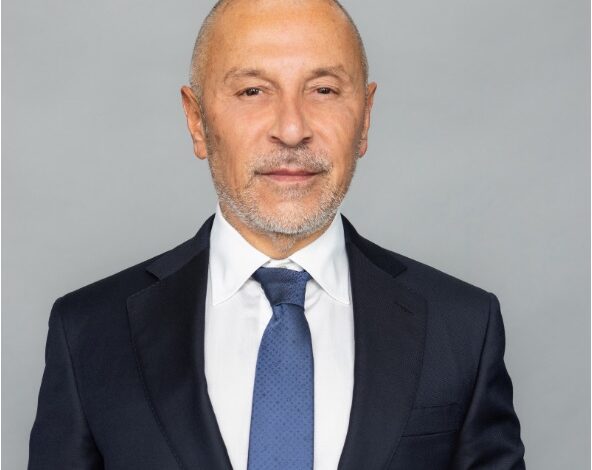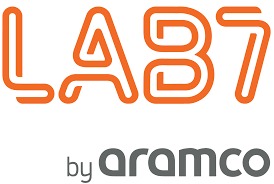KSA General Manager ENGIE Discusses Data Center Industry Challenges in Saudi Arabia

Riyadh – Asdaf News
In a recent interview with Asdaf News, Abdullah Sibai, KSA General Manager of ENGIE, shared his insights on the challenges facing the rapidly growing data center industry in Saudi Arabia
On the severity of the current workforce shortage in data centers and the measures being taken to address it, Sibai, explained that the data center industry in Saudi Arabia is experiencing rapid growth, fuled by the nation’s Vision 2030 initiative and increasing demand for digital services. This growth is creating substantial opportunities for workforce expansion. This dynamic market has sparked active competition for skilled professionals, driving continuous evolution in compensation and benefits. The government’s mandate for 25% of the local workforce by 2024 has provided a new incentive to accelerate localization efforts.
Sibai further elaborated on how organizations have responded by implementing global recruitment strategies across various countries, including India, Pakistan, Malaysia, South Africa and more. Companies are also actively diversifying their recruitment sources and investing in relocation packages. To meet localization goals, organizations are working in coordination with vendors and service providers to develop training programs, particularly integrating new talent during testing, commissioning, and handover phases.
When asked about specific initiatives being implemented to develop the local talent and their effectiveness, Sibai highlighted The Uptime Institute Data Center Academy, launched in 2024. He described this as a major milestone in local talent development. This strategic collaboration between the Ministry of ICT and Mutawa Academy demonstrates Saudi Arabia’s commitment to building a skilled workforce, with plans to train 3,000 Saudi nationals annually and develop 10,000 skilled professionals over six years. As the country’s first comprehensive data center training academy, it combines theoretical knowledge with practical training and industry-recognized certifications.
Sibai also pointed out that organizations are pursuing MEP specialists who can be reskilled with data center expertise. Companies are also implementing graduate training programs and hands-on training initiatives. Industry leaders emphasize that addressing the skills gap requires collaboration between government initiatives, universities, and data center developers, particularly in developing specialized academic curricula.
Addressing the impact of compressed design timelines on data center development and the resulting consequences, Sibai stated that design timeline have undergone significant compression, reducing from 36-40 weeks to 20 weeks total. He explained that the current schedule allocates just four weeks for concept design followed by two 8-week periods for schematic and detailed design. This acceleration has created challenges in integrating crucial elements such as waste management and facilities management considerations.
The industry recognizes that early engagement of facilities management teams is crucial, particularly for maintenance accessibility and operational efficiency. However, cost considerations and aggressive timelines often limit this early involvement. A balanced approach is emerging where organizations implement “light cover” facility management during the design phase to maintain cost efficiency while still benefiting from operational expertise.
On the power requirements evolving with the shift toward AI-focused facilities, Sibai explained that the evolution of AI facilities has brought unprecedented changes to power requirements. He added that the shift toward AI-focused facilities in Saudi Arabia is driving a significant increase in power demands. The industry is also transitioning from traditional data center facilities to AI-focused installations, creating new challenges in power distribution and cooling strategies. This transition is particularly significant in Saudi Arabia’s high-temperature environment.
The Kingdom is addressing these challenges through strategic investments in energy-efficient data centers and the exploration of diverse energy sources to ensure sustainable growth in AI infrastructure.
Addressing the advancements in waste management practices and facilities adaptation to this, Sibai said that waste management has evolved significantly, driven by hyperscaler requirements for zero landfill initiatives. Leading hyperscalers now require proper waste management programs and zero landfill diversity as part of their specifications. Facilities implement comprehensive waste segregation programs across six categories: mixed papers, cardboard, organics, metal, glass, and plastic. The Eastern Region has emerged as a leader in establishing complete recycling cycles.
Organizations are also focusing on waste reduction from the procurement stage, working with suppliers to minimize packaging and implementing education programs for tenants on waste management practices. A pioneering waste-to-energy in the Kingdom project launched in July 2024 aims to generate 30 megawatts of power. Facilities are also pursuing certifications such as LEED and the new TRUE (Total Resource Use and Efficiency) certification by GBCI, specifically focusing on zero waste initiatives.
Sibai also spotlighted the unique regional challenges that Saudi Arabia represents for data center operations and how they are being addressed, saying that Saudi Arabia’s operational environment presents distinct challenges, including extreme temperatures and dust affecting equipment reliability. These conditions necessitate robust cooling systems, significantly increasing energy demands and operational expenses. To address this, investments are being made in energy-efficient technologies and renewable energy sources. For instance, the planned net-zero AI data center at Neom’s Oxagon hub aims to operate entirely on renewable energy, including green hydrogen and solar power.
Additionally, the limited local maintenance vendor network impacts operations, while regional infrastructure variations create operational disparities, particularly in recycling capabilities, power reliability, and connectivity options, Sibai concluded.




